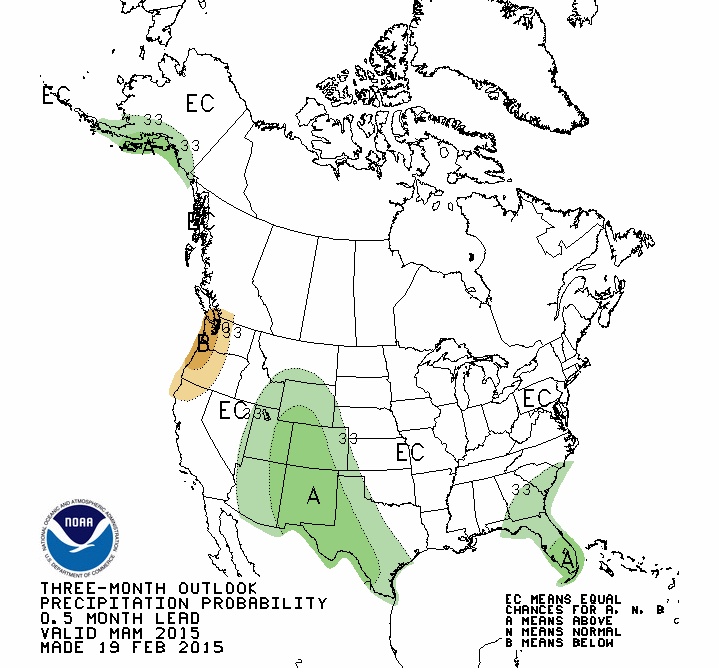
The Western counties in the Panhandle received much lower rainfall totals than the eastern counties in January and February 2015. Portions of Bay, Franklin, Gulf, Wakulla and Jefferson had more than 10″ in the first two months of 2015.
FAWN Station Summary
 Just as the map above showed the variation in rainfall across the region, the six Florida Automated Weather Network (FAWN) stations in the Panhandle also measured much higher rainfall totals at the eastern locations. The Monticello station recorded 11.5″ in January and February, which was 2.4″ above average. The stations at Marianna, DeFuniak, and Jay recorded less than 8″ in the first two months, almost 3″ below average rainfall for these locations. As might be expected, the Florida Drought Monitor shows that the western counties are still experiencing moderate drought conditions.
Just as the map above showed the variation in rainfall across the region, the six Florida Automated Weather Network (FAWN) stations in the Panhandle also measured much higher rainfall totals at the eastern locations. The Monticello station recorded 11.5″ in January and February, which was 2.4″ above average. The stations at Marianna, DeFuniak, and Jay recorded less than 8″ in the first two months, almost 3″ below average rainfall for these locations. As might be expected, the Florida Drought Monitor shows that the western counties are still experiencing moderate drought conditions.
 Planting Season Forecast
Planting Season Forecast
 There is hope for above average rainfall over the next three months. While the above graphical forecast is for March through May, much of the anticipated extra rainfall is expected in March.
There is hope for above average rainfall over the next three months. While the above graphical forecast is for March through May, much of the anticipated extra rainfall is expected in March.
El Niño Update
NOAA sent out a press release this week announcing the offical arrival of El Nino conditions. Here is a link to the official NOAA report: NOAA: Elusive El Niño arrives. Pam Know, UGA Climatologist posted the following information this week on her blog site:
We’ve been flirting with El Nino-like conditions for several months since the first El Nino watch was issued last spring, but until now the conditions haven’t quite come together. What does this mean for Southeast agriculture? Since this El Nino is weak and likely to remain so, the impacts from the El Nino will be less than usual. However, in general, El Nino springs are wetter and cooler than normal and El Nino summers are slightly wetter than normal, with the highest likelihood of dry conditions in late summer, due to lower than usual numbers of tropical storms.
 0
0

